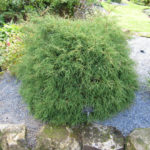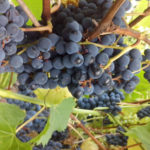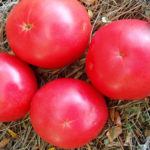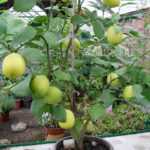Plum variety Eurasia 21
Eurasia 21 is an early ripe variety of Prunus domestica, bred by Voronezh State Agrarian University. This is a complex interspecific hybrid obtained from the spontaneous hybridization of the American diploid cultivar Lacrescent (by Professor Alderman). Selected among the seedlings of the hexaploid group from free pollination. The formation of the Eurasia 21 genotype involved the diploid species of the East Asian plum, American plum, Simon plum, Chinese plum, home plum and cherry plum. The authorship is assigned to A.N. Venyaminov and A.G. Turovtseva.
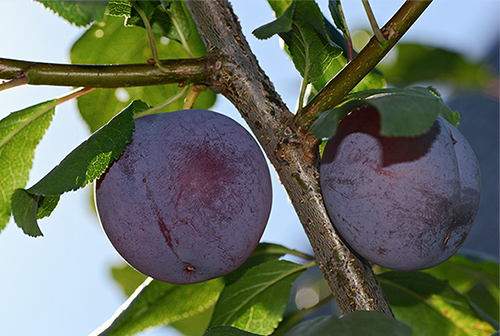
In 1986, the variety was included in the state register of plants of the Russian Federation for the Central, Central Black Earth and Middle Volga regions. Currently excluded from the state register.
Large trees, up to 6 meters in height. The crown is of a spreading shape, mosaic structure (fruit wood and the color of the bark of branches as in American plum species), thinning 10 years after planting. The bark of the trunk and branches is brown-gray. The leaves are above average, elongated, with a pointed tip, the edge of the leaf is framed by fine serration. The leaf blade is dense, dark green in color. Abundant flowering. Small flowers.
Fruits are above average (average weight 30 - 35 g, maximum - 50 g), round in shape. The appearance is very attractive. The skin is thin, burgundy colored and covered with a strong waxy bloom. The bones are creamy, medium-sized (1.3 g), flattened, poor separability from the pulp. Peduncles are of medium length and thickness.
The pulp is yellow-orange in color, fleshy, slightly loose, juicy, aromatic, taste - sweet and sour. In general, according to the organoleptic method, taste is assessed as good, but the biochemical composition of the fruit is still not rich enough: dry matter - 14.6%, the amount of sugars - 7.02%, acids - 2.7%. The predominant use of fruits is fresh consumption, as an early-ripening table variety. Also Eurasia 21 is suitable for technological processing: a very aromatic juice with pulp, jams, confitures is prepared from the fruits.

The early maturity of this plum is good: the trees begin to bear fruit in the 4th - 5th year after planting. Fruit ripening takes place at an early date (the last days of July - the first decade of August), unevenly, so the harvest is harvested in several visits. Under favorable conditions for pollination and fertilization, mature trees give high yields (up to 50 kg / der.). The average yield of a 7-year-old tree is 18 - 28 kg, over 8 years old - 30 - 40 kg. During the rainy and cold month of May, the level of fruit set decreases markedly.
Over a long-term period, the yield at three state variety plots (Belgorodsky, Krylovsky, Pavlovsky) was: average - 257 c / ha, maximum - 403 c / ha. And according to the data of 1982, in the Krylovskiy GSU, the yield reached 665 c / ha. On average, 50 kg of fruits were harvested from one tree, the maximum figure was 80 - 100 kg / der.
Winter hardiness of trees and root system is assessed as high; winter hardiness of flower buds is average. For comparison: the roots of Eurasia 21 can withstand a temperature drop in the root layer to minus 20 ° C, while the roots of domestic plum seedlings can only withstand temperatures down to minus 8-10 ° C. The variety is resistant to diseases and pests. In some years, the fruits may be affected by a monilial burn. After damage, the crown quickly recovers.
This plum is self-sterile
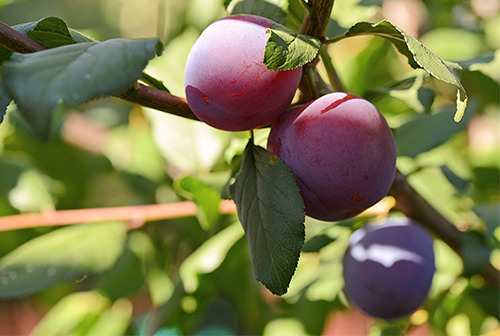
Eurasia 21 is used not only as an early table variety, but also as a winter-hardy seed and partially clonal stock. Rooting rate with green cuttings reaches 60 - 70%. Also, the trees of this plum are used as good stem and skeleton formers for plum varieties with damaged bark on boles.
In addition, the variety is valuable in breeding work as an excellent donor. In VNIIGiSPR them. I.V. Michurina Kursakov G.A. bred a whole group of varieties from crossing Eurasia 21 with varieties of home plum - Zarechnaya early, Etude and others, brought to the zoned assortment of the Tambov region.
Among the main advantages are noted: high winter hardiness, yield, early maturity, high taste and good keeping quality of fruits (up to 15 - 20 days in a refrigerator).
The main disadvantages include: the huge size of the trees (a weak rootstock is required), irregular fruiting, susceptibility to certain diseases (including clasterosporia), as well as the fact that the high acidity of the fruits and some looseness of the pulp do not allow using this plum when cooking compotes.
